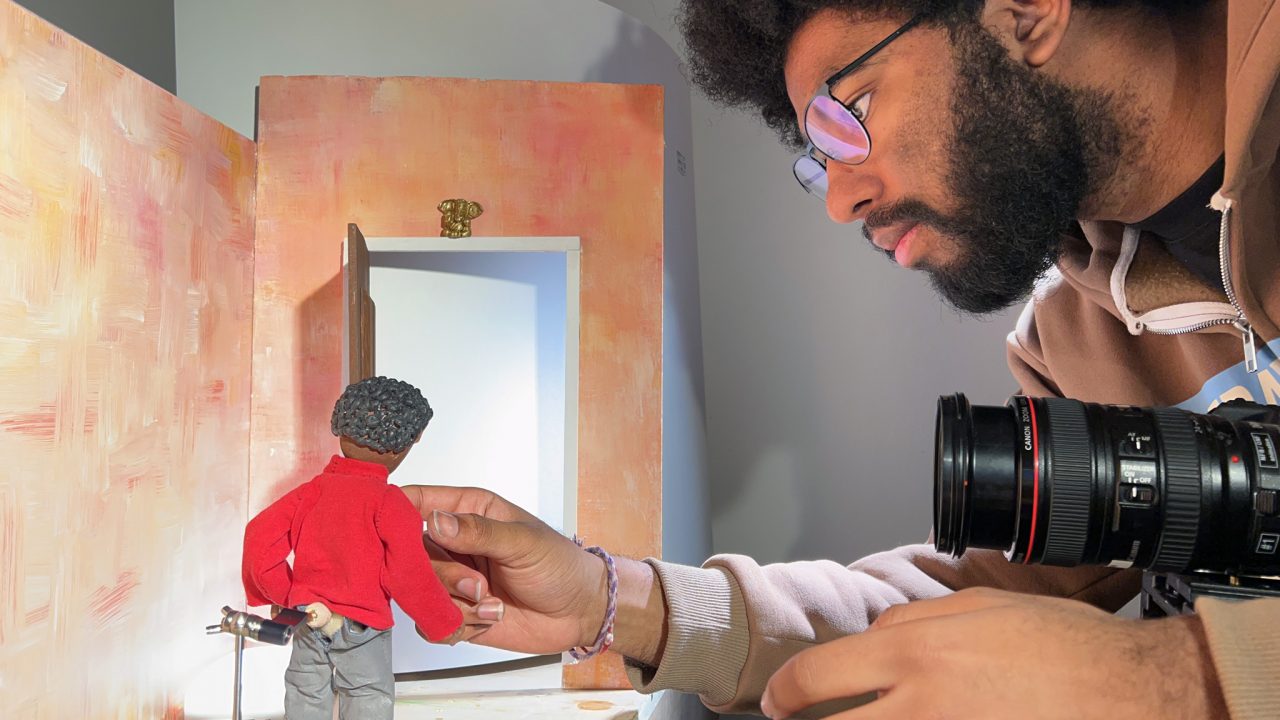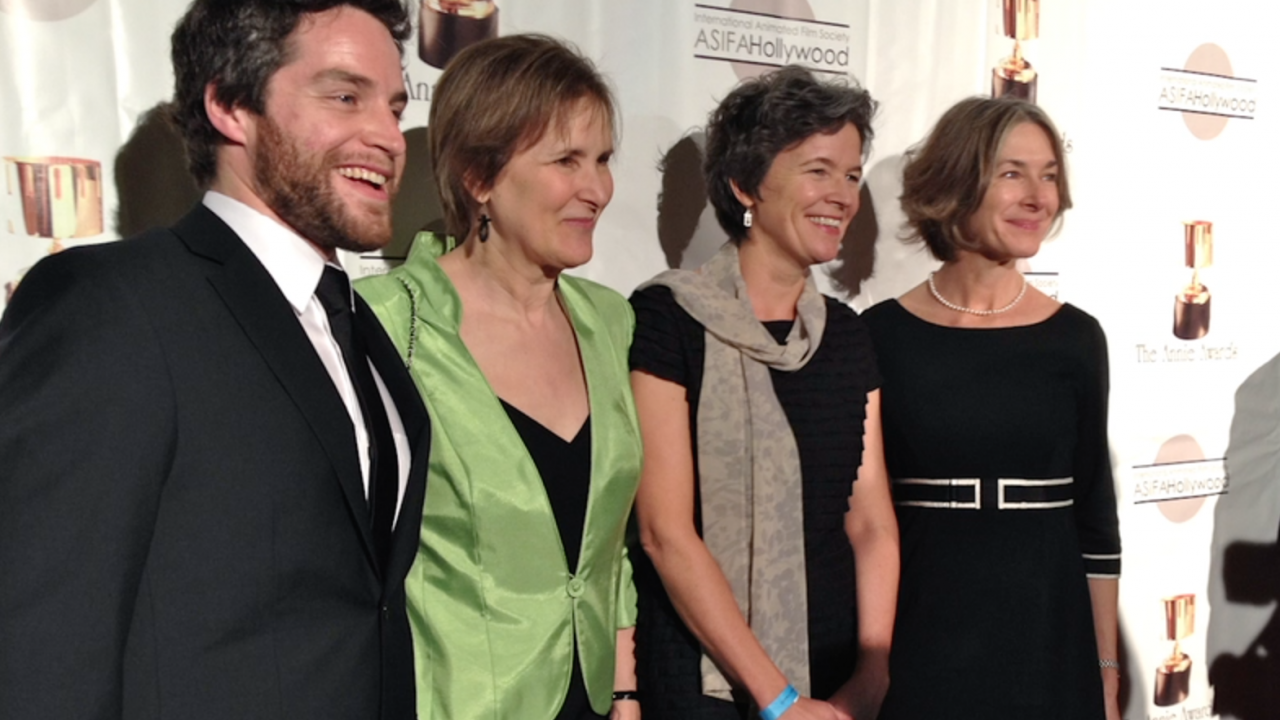Behind the scenes of the animated short Tying Your Own Shoes
The following is a guest post by Tanya Koivusalo.
The following is a guest post by Tanya Koivusalo.
The Project
The NFB Mediatheque in Toronto is thrilled to present two special events this March Break as part of the launch of the animated documentary Tying Your Own Shoes (TYOS), about four adult artists with Down syndrome.
The film received its world premiere at the DOK Leipzig Festival in October 2009, and director Shira Avni provided an account of her experiences at the festival on the NFB blog. Now that the film is launching, the Mediatheque staff are excited to welcome back Shira and the artists – Petra, Matthew, Daninah and Katherine.
Shira shot the film at the Mediatheque over the course of 2 months in 2007, and the staff came to feel as if her project was their own – they are thrilled at the opportunity to celebrate this special moment with her, and with audiences in Toronto.
Production
Tying Your Own Shoes was animated using different techniques: drawing, paint-on-glass, clay-on-glass and paper cut-out animation, and the images were captured using a digital camera. All of the animation was backlit, which means that the artists worked in a completely dark room where the only light came from a light box placed underneath the artwork. The artists tried out different animation techniques and chose the method they preferred.
The process of animation is long and complex. To create the illusion of movement, each artist had to draw or paint 12 frames (pictures) for every second of animation – that means they had to draw 720 pictures for every minute of film. Each frame is subtly different from the last one, so that when you project the frames one after the other, you create the illusion of life.
The four artists were interviewed about life, love, art, war, relationships, childhood and their experiences of Down syndrome. The interviews took place over multiple sessions and resulted in over 40 hours of video footage. The recordings were then edited together, with input from the artists, who went on to animate their self-portraits.
Editing
Once the summer workshop was done, the editing and bridging animation work began. With over 40 hours of video and sound to sift through, editor Carrie Haber cut the footage down to 16 minutes and brought a flowing structure to the film.
Editing the film was a daunting task, but Haber managed to pull out the most evocative of the recordings. As there were so many beautiful interviews to work with, filmmaker Shira Avni and assistant animator Lillian Chan created a few short animations to fill in the gaps where there was not enough animation or video to accompany the narration. The majority of animation in the film, however, was created by Katherine, Matthew, Petra and Daninah.
Visual and Sound Effects
Once all of the animation and editing was complete, it was time to animate the subtitles by tracing sentences five times, to make them shimmer, and placing them into the film. The final step was adding music and sound effects created by Luigi Allemano.
Director Shira Avni talks about her inspiration
Director Shira Avni offers some insight into her choice to make a documentary about artists with Down syndrome, and her decision to animate the film:
“There are a number of films about Down syndrome, but few that portray the subject entirely from the point of view of people with Down syndrome. I have been working with people with Down syndrome for many years, and for a previous project, I interviewed a number of people with Down syndrome. Many were talented painters, weavers, sculptors, dancers, puppeteers, and all had surprising, funny and moving stories to tell. Tying Your Own Shoes provides a forum for artists with Down syndrome to portray themselves as they wish to be seen.
Animation is uniquely suited to communicating complex topics and emotions in a short time frame, and it provides a gentle but efficient means to break down stereotypes and stimulate alternate ways of thinking. I hope that Tying Your Own Shoes provides an effective vehicle for examining disability, art and identity, and that it contributes to a positive discussion and a deeper understanding of these issues. I believe this film can open people’s minds to difference.”
Screenings
Audiences in Toronto can experience the film at the NFB Mediatheque (150 John St, at Richmond St W), on Sunday March 14 and Sunday March 21, at 10 AM, for FREE. The screenings are followed by hands-on animation workshop opportunities, in order for viewers to get a firsthand experience of the artistic techniques used in the film. For more information on the events, and to register, please call 416 973 3012. More information can also be found on the website.



